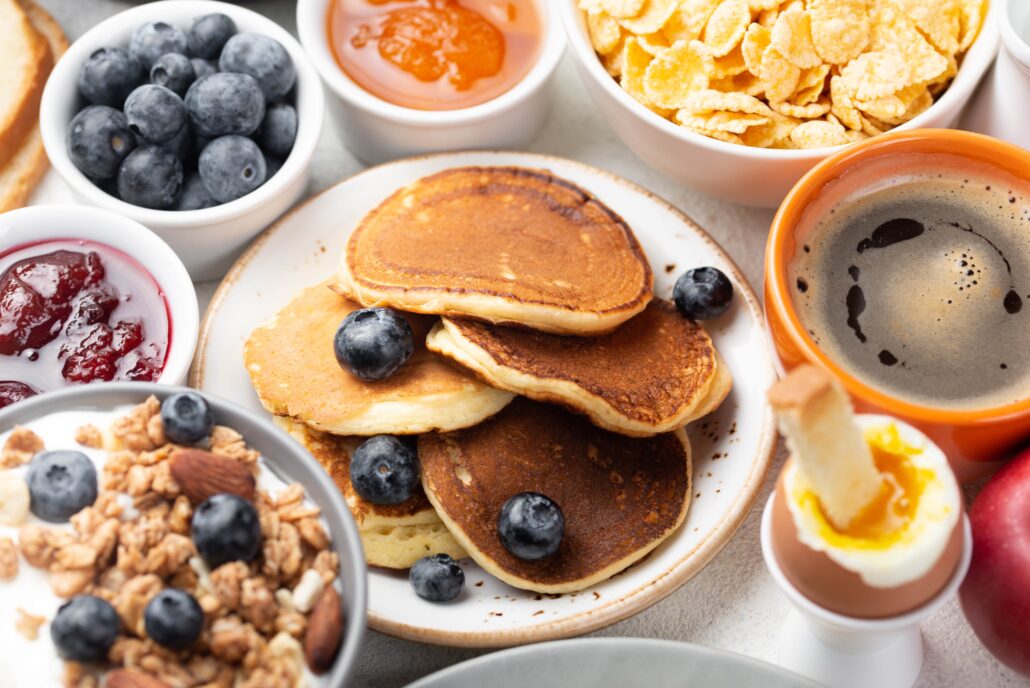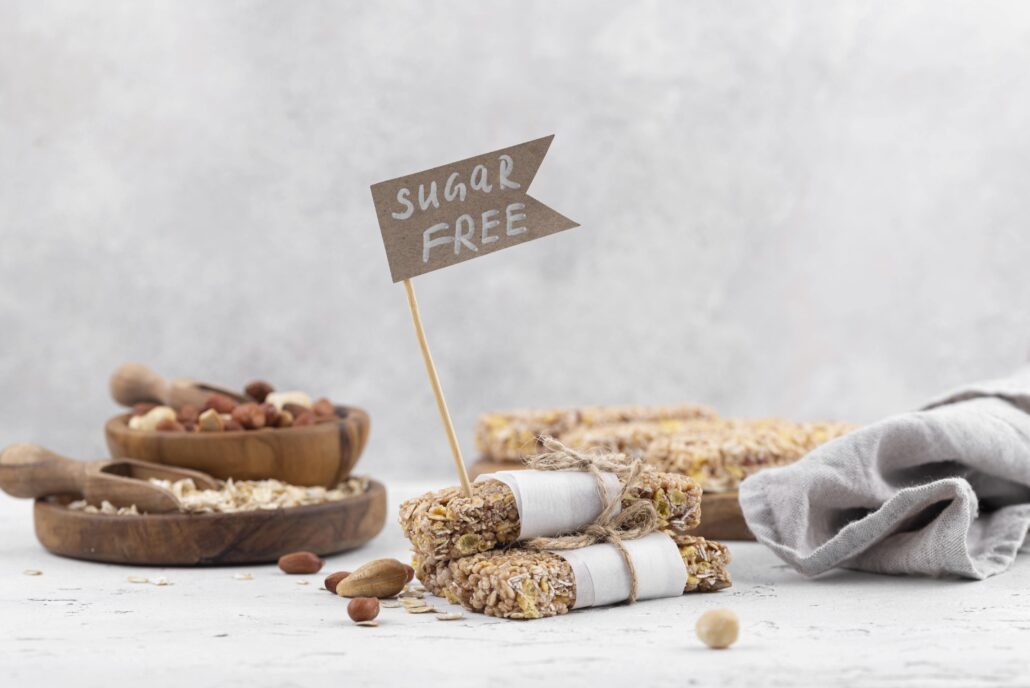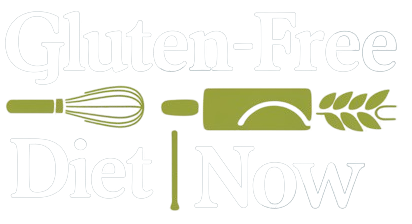Breakfast 1
Gluten-Free Pancake Variations

Outline of the Article: Gluten-Free Pancake Variations
Table 1: Overview of Gluten-Free Pancake Base Ingredients
- Common Gluten-Free Flours
- Rice Flour
- Almond Flour
- Coconut Flour
- Binders and Leaveners
- Xanthan Gum
- Baking Powder
**Table 2: *Bold* Various Gluten-Free Pancake Flavor Variations**
- Fruit-Based Variations
- Blueberry Pancakes
- Banana Pancakes
- Savory Pancake Variations
- Herb and Cheese Pancakes
- Sweet Potato Pancakes
Article Outline
Introduction
- The Rise of Gluten-Free Diets
- Why More People are Going Gluten-Free
- Benefits of Gluten-Free Pancakes
- Challenges of Gluten-Free Baking
- Texture Issues
- Flavor Adjustments
1. Understanding Gluten-Free Pancake Ingredients
- Gluten-Free Flour Options
- Rice Flour: Light and Versatile
- Almond Flour: Nutty and Rich
- Coconut Flour: Low Carb and Absorbent
- Essential Binders for Texture
- The Role of Xanthan Gum
- Alternatives to Xanthan Gum
2. Mastering the Gluten-Free Pancake Batter
- Balancing Wet and Dry Ingredients
- The Perfect Ratio for Gluten-Free Batters
- Adjusting for Different Flours
- Tips for Achieving Fluffy Pancakes
- The Importance of Leaveners
- Using Eggs and Dairy Alternatives
3. Classic Gluten-Free Pancake Recipes
- Traditional Gluten-Free Pancakes
- A Simple and Reliable Recipe
- How to Customize the Recipe
- Buttermilk Gluten-Free Pancakes
- The Tangy Twist of Buttermilk
- Dairy-Free Buttermilk Alternatives
4. Fruity Gluten-Free Pancake Variations
- Blueberry Pancakes
- Benefits of Adding Blueberries
- Fresh vs. Frozen Blueberries
- Banana Pancakes
- Natural Sweetness of Bananas
- Adding Nut Butter for Extra Protein
5. Decadent Chocolate and Nut Pancakes
- Chocolate Chip Pancakes
- Choosing the Right Chocolate Chips
- Adding Cocoa Powder for Extra Richness
- Nutty Pancakes
- Almond and Walnut Pancakes
- Incorporating Nut Butters
6. Savory Gluten-Free Pancake Ideas
- Herb and Cheese Pancakes
- Pairing Herbs with Cheese
- Ideal Cheeses for Gluten-Free Pancakes
- Vegetable-Based Pancakes
- Sweet Potato Pancakes
- Zucchini Pancakes
7. International Gluten-Free Pancake Styles
- French-Inspired Crepes
- Light and Thin Gluten-Free Crepes
- Sweet vs. Savory Crepe Fillings
- Scandinavian Potato Pancakes
- Gluten-Free Potato Pancakes
- Toppings for Potato Pancakes
8. Sweet Gluten-Free Pancake Toppings
- Fruit Compotes and Jams
- Homemade Compote Recipes
- Low-Sugar Jam Options
- Syrups and Sauces
- Maple Syrup and Alternatives
- Chocolate and Caramel Sauces
9. Savory Gluten-Free Pancake Toppings
- Avocado and Eggs
- The Perfect Brunch Combination
- Spicing Up Your Avocado
- Smoked Salmon and Cream Cheese
- A Sophisticated Twist
- Adding Capers and Dill
10. Gluten-Free Pancakes for Special Diets
- Vegan Gluten-Free Pancakes
- Egg and Dairy Substitutes
- Binding Agents for Vegan Pancakes
- Keto-Friendly Gluten-Free Pancakes
- Low-Carb Flours and Sweeteners
- Balancing Macros for Keto Pancakes
11. Kid-Friendly Gluten-Free Pancake Ideas
- Fun Shapes and Flavors
- Making Pancakes Fun for Kids
- Using Cookie Cutters and Molds
- Adding Extra Nutrition
- Sneaking Veggies into Pancakes
- Protein-Packed Pancakes for Growing Kids
12. Quick and Easy Gluten-Free Pancake Mixes
- Store-Bought Gluten-Free Pancake Mixes
- Best Brands and Where to Find Them
- How to Enhance Store-Bought Mixes
- DIY Gluten-Free Pancake Mix
- Creating Your Own Mix at Home
- Storing and Using Homemade Mixes
13. Tips for Cooking and Storing Gluten-Free Pancakes
- Cooking Techniques for Perfect Pancakes
- Using the Right Pan and Heat
- Flipping Tips for Beginners
- Storing and Reheating Pancakes
- Freezing Pancakes for Later
- Reheating Techniques for Optimal Texture
14. Gluten-Free Pancakes for Meal Prep
- Batch Cooking Gluten-Free Pancakes
- How to Make Pancakes in Bulk
- Storing and Portioning for the Week
- Creative Pancake Meal Ideas
- Pancake Breakfast Sandwiches
- Using Pancakes in Lunch and Dinner
15. Conclusion
- Why Gluten-Free Pancakes Are Worth the Effort
- The Joy of Delicious and Healthy Pancakes
- Encouragement to Experiment with Flavors
- Final Thoughts on Gluten-Free Pancake Variations
FAQs
- Can I make gluten-free pancakes without eggs?
- What are the best gluten-free flour blends for pancakes?
- How can I make my gluten-free pancakes fluffier?
- Are gluten-free pancakes healthier than regular pancakes?
- Can I freeze gluten-free pancake batter?
Now that the outline is complete, I’ll begin writing the article step by step.
Gluten-Free Pancake Variations

Introduction
The Rise of Gluten-Free Diets
In recent years, the gluten-free diet has transformed from a niche requirement for those with celiac disease to a popular lifestyle choice. You’ve probably noticed gluten-free options popping up everywhere, from grocery store aisles to restaurant menus. But why the sudden shift? Well, more people are recognizing the potential health benefits of cutting out gluten, from improved digestion to better energy levels. And when it comes to breakfast staples, gluten-free pancakes are leading the charge in tasty, gluten-free alternatives.
Why More People are Going Gluten-Free
For many, going gluten-free isn’t just about avoiding certain grains; it’s about embracing a diet that makes them feel their best. Whether you have celiac disease, gluten sensitivity, or you’re just curious about the benefits, switching to gluten-free pancakes is an easy and delicious place to start.
Challenges of Gluten-Free Baking
But, let’s be honest—baking without gluten can be tricky. Have you ever tried making gluten-free pancakes only to end up with something more akin to a rubbery frisbee than a fluffy pancake? Yeah, it’s not always straightforward. The texture and flavor can be hard to nail down, which is why understanding the right ingredients and techniques is crucial.
1. Understanding Gluten-Free Pancake Ingredients
Gluten-Free Flour Options
One of the first things you need to get right is your choice of flour. Rice flour is light and versatile, making it a common choice for gluten-free pancakes. It’s a great base that provides a neutral flavor, allowing your add-ins to shine. Almond flour, on the other hand, offers a nutty richness that adds depth to your pancakes, but it’s a bit denser, so you’ll need to balance it with the right amount of liquid. Lastly, coconut flour is a popular low-carb option, but beware—it’s super absorbent, meaning a little goes a long way.
Essential Binders for Texture
Now, if you’ve ever wondered why gluten-free baked goods sometimes lack the structure of their gluten-filled counterparts, the secret lies in binders like xanthan gum. This ingredient helps mimic the elasticity of gluten, holding everything together and giving your pancakes a better texture. If you’re not into xanthan gum, don’t worry—alternatives like chia seeds or flaxseeds can also do the trick, adding a bit of fiber along the way.
2. Mastering the Gluten-Free Pancake Batter
Balancing Wet and Dry Ingredients
Getting the right balance between wet and dry ingredients is key to a successful gluten-free pancake batter. Too much liquid, and you’re left with soggy pancakes that won’t hold their shape. Too little, and you’ll end up with a dough that’s nearly impossible to spread on the pan. Aim for a consistency similar to regular pancake batter—thick but pourable. Remember, different gluten-free flours absorb liquids differently, so you may need to adjust based on your chosen flour.
Tips for Achieving Fluffy Pancakes
Who doesn’t love a stack of fluffy pancakes? The secret lies in the leavening agents—typically baking powder. Make sure your baking powder is fresh and gluten-free to get the lift you need. Additionally, incorporating eggs into your batter helps add structure and fluffiness. If you’re avoiding eggs, consider using a combination of baking soda and apple cider vinegar to give your pancakes a similar rise.
#
Categories
- Batch Cooking
- Beginner’s Guide
- Best Store-Bought Gluten-Free Snacks
- Breakfast
- Desserts
- Dinner
- Gluten-Free Baking
- Gluten-Free Cake & Pastry
- Gluten-Free Diet for Weight Loss
- Gluten-Free Living
- Gluten-Free Meal Planning
- Gluten-Free Myths & Facts
- Gluten-Free Recipes
- Gluten-Free Snacks & Convenience Foods
- Gluten-Free Travel
- Grocery Shopping Tips
- Holiday Recipes
- Homemade Snack Ideas
- How to Read Labels
- Intermittent Fasting with Gluten-Free
- Kid-Friendly
- Living Gluten-Free on a Budget
- Low-Carb Gluten-Free Meals
- Lunch
- Meal Prepping
- On-the-Go Gluten-Free Options
- Quick & Easy
- Snacks
- Substituting Gluten-Free Flours
- Success Stories
- Tips for Dining Out
- Uncategorized

